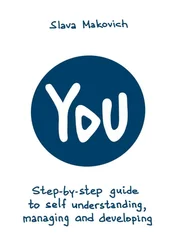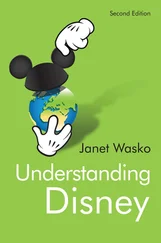Because direct evidence of such changes is rarely available, researchers often seek indirect “markers” of biological development, particularly those markers that are determined before birth and that are sensitive to atypical womb conditions. One of the most important and well-studied biological markers of prenatal development is handedness.
Did you know that fetuses often suck their thumbs? They do, and ultrasound studies show that the rate of right-handed thumb sucking in fetuses matches relatively closely the rate of right-handedness in adults (Hepper, Shabidullah, & White, 1991). This rather intriguing correspondence in bodily characteristics between fetal and adult life suggests that handedness is determined before birth.
Handedness is linked to genes (and what isn’t?), including the androgen receptor (AR) gene mentioned above (Medland et al., 2005). Elevated non-right-handedness is also associated with atypical pregnancy/birth conditions (e.g., birth stress) (Coren, 1993). Handedness is additionally linked to variations in prenatal hormone levels (Witelson & Nowakowski, 1991). Thus, if a group has a rate of non-right-handedness that differs statistically from, say, 10 percent—the rate seen in many adult populations—it suggests that this group has elevated variations in relevant genes and/or atypical prenatal development (e.g., altered hormone levels). For example, non-right-handedness is elevated in gay men and lesbians (Lalumière, Blanchard, & Zucker, 2000) and other groups with atypical sexual attractions (Bogaert, 2001). [55] One of these groups is pedophiles. This fact should not be taken to mean that homosexuality (or asexuality) and thus pedophilia should be seen as linked in a behavioral way—that is, to mean that gay men, lesbians, or asexuals are more likely to abuse children. This is not the case. Instead, this fact should be taken as evidence that sexual attraction, atypical and otherwise, is very likely influenced by prenatal events.
This research suggests that atypical womb events (e.g., variations in prenatal hormones) can alter brain mechanisms affecting both handedness and patterns of sexual attraction in these groups. As such, handedness is also an important biological marker to examine in the context of a possible biological underpinning of asexuality.
Is there any evidence that asexuals have atypical handedness patterns? There is. Perhaps the most intriguing finding related to the etiology of asexuality is that 26 percent of (self-identified) asexual people have been found to be non-right-handed (Yule, 2011). This is a very high percentage in comparison to population norms or to the control group of heterosexual participants (12 percent) in the study itself. The elevated non-right-handedness occurred in both asexual men and asexual women, and is consistent with elevated rates of non-right-handedness in both gay men and lesbians (Lalumière et al., 2000).
Another potential biological marker of atypical prenatal development is a high number of older brothers. Such a marker is relevant to the biology of men’s sexual orientation and the theory of maternal immune response contributing to male homosexuality mentioned above. An important corollary of this theory is that the immune effect should have a higher likelihood of occurring with each son that a mother gestates. This is because a mother has increased opportunities to develop an immune response against male-specific substances with each male gestation. Each male fetus gestated increases the likelihood that eventually a mother will be exposed to and ultimately react against such a substance as a male-specific protein. So, in other words, we should observe an “older brother effect”—a greater number of older brothers in gay men versus heterosexual men—if a maternal immune effect underlies male homosexuality. There should also be no sibling (e.g., older sister) effect in female homosexuality, because a mother should not develop an immune response against a female-specific substance, given that she herself is female.
Is there an older brother effect in gay men? Yes! On average, gay men have a higher number of older brothers than do heterosexual men. In 1996, psychologist Ray Blanchard and I first demonstrated this effect using a Canadian sample (Blanchard & Bogaert, 1996). However, there is now a large body of research, including cross-cultural studies, showing this effect, but only in men’s sexual orientation (Blanchard, 2004; Bogaert & Skorska, 2011). The fact that this “older brother effect” is indeed a biological phenomenon is further demonstrated by research showing that gay men have an elevated number of older biological brothers, even ones with whom they were not reared; yet they do not have an elevated number of older stepbrothers or adopted brothers (Bogaert, 2006a). Thus, these findings point to the importance of the biological mother, whom biological siblings share, and not the childhood or rearing environment, which step- or adopted siblings share when they were raised together.
Interestingly, there is recent evidence of an “older brother effect” in asexual men: Morag Yule (2011), in her master’s thesis under the supervision of psychologist Lori Brotto at the University of British Columbia, found that asexual men have a higher number of older brothers than a comparison sample of heterosexual men. No one yet has conducted a study on whether the older brother effect in asexual men is restricted to biological (versus non-biological) older brothers, but the pattern of sibling effects in the Yule study is very similar to those observed in many similar studies of male homosexuality.
The discussion above places a heavy emphasis on prenatal mechanisms, such as hormones organizing brain structures during fetal development. [56] We can add to this evidence the research mentioned in chapter 6 showing that asexual women have atypical menarche onset (Bogaert, 2004). There is also evidence that asexual people may be somewhat shorter than sexual people (Bogaert, 2004). Atypical menarche and stature are both potential markers of altered biological development, including an altered prenatal development. Interestingly, there is evidence of atypical height patterns in gays and lesbians, although this research is not consistent and may be subject to non-biological interpretations (Bogaert & McCreary, 2011).
What about current or circulating hormones affecting asexuality? Do asexual people have low circulating hormones that reduce sex drive, and minimize their sexual attractions?
As mentioned in chapter 2, prior to the 1970s, gay men were sometimes administered high levels of testosterone. This was done because “reparative-oriented” clinicians felt that this hormone treatment could change gay men’s orientation. Yet it did not make them attracted to women; it just made them horny for more sex with men! The problem with this approach, aside from the ethics of it, was that gay men’s orientation was already determined, perhaps even before birth, and thus administering testosterone in adolescence and adulthood just “activated” or stimulated their sex drives. So the testosterone worked like fuel on the fire of whatever disposition (i.e., brain organization) was already there in the first place.
By the same token, it is unlikely that we can change many asexual people’s orientation by administering sex hormones. Thus, like gay men, asexual people’s underlying attractions (to no one, in this case) are unlikely to be changed by such interventions, although they may make the masturbating asexuals masturbate even more (see chapter 5)! Indeed, the fact that some asexual people are masturbating already (and some do so frequently) means that, at least for these asexual people, their asexuality is not a sex-drive issue, and thus their underlying sexual connection to others is unlikely to change with added hormones. Finally, as mentioned in chapter 3, there is little evidence that asexuality in animals (the so-called duds in rodents or NORs in rams) is the result of low levels of circulating or activating hormones (Adkins-Reagan, 2005; Perkins, Fitzgerald, & Price, 1992). [57] Does this mean that no asexual person would ever become sexual (e.g., develop sexual attractions) by taking testosterone? Not necessarily. Although the majority of asexual people likely do not have a “hormone deficiency,” there is always a possibility that some asexual people have lower-than-average testosterone or other hormones relative to sexual people. For example, low hormone levels in some asexual people may occur because of a health condition (for some evidence of this, see my original article published in 2004). Also, it is possible that some asexual people with average hormone levels who take abnormally high testosterone could raise their sex drive and, perhaps, develop some level of sexual attraction for others. There are at least two issues here, though: First, as mentioned, there is currently little evidence that asexual people, as a whole, have lower testosterone levels than average sexual people. Second, is it ethical to administer abnormally high hormones to an asexual person if asexuality, arguably, is not a disorder (see also chapters 8 and 9)?
Читать дальше












